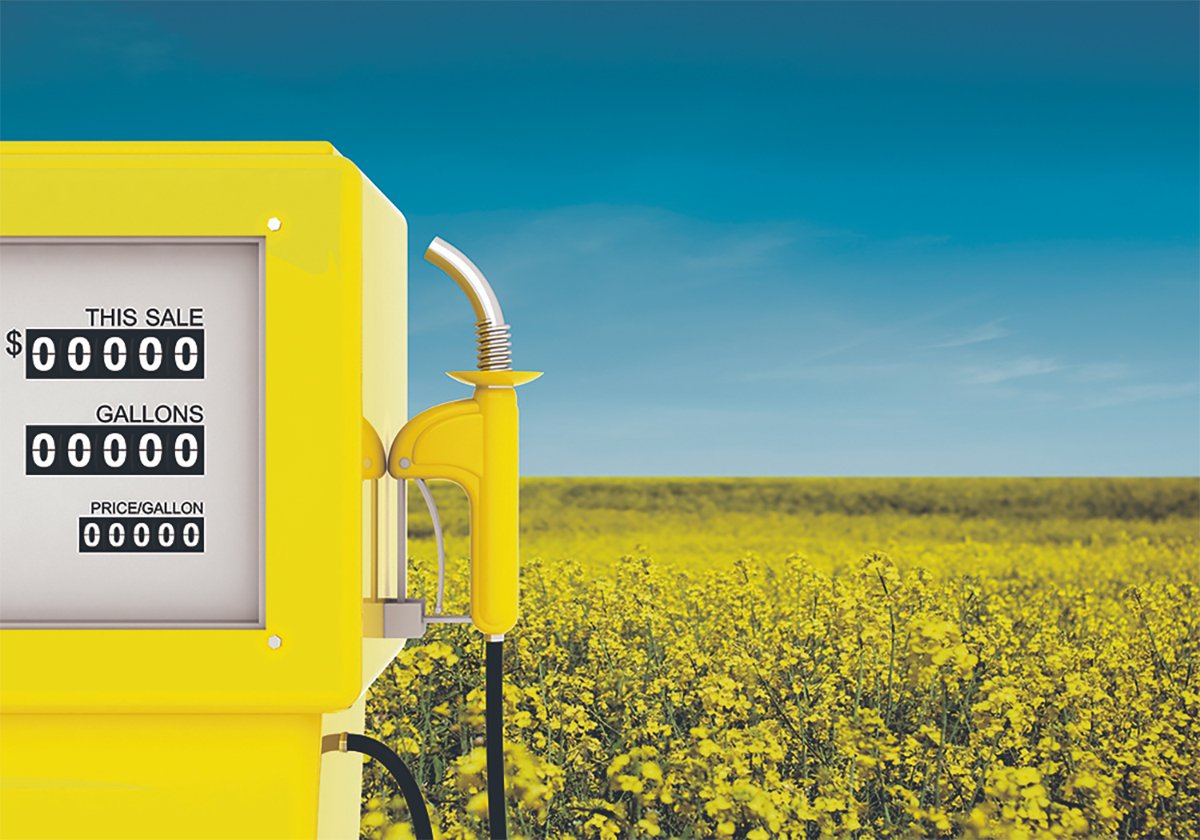Loonie weighs on cattle
The rapid rise of the Canadian dollar was a key feature of the fed cattle market last week, Canfax said.
The disparity between yearlings and short-fed calves continued in rail grade pricing, but in the live market calf trade firmed.
Most cattle on the show list sold, but there was some carryover.
The fed steer average price for the week was $89.27 per hundredweight, down 48 cents, and fed heifers were $89.25, up 49 cents.
The Alberta fed cash to cash basis strengthened to $8.03 under, compared to $10.95 under because of the high Canadian dollar and Alberta and Nebraska prices staying steady.
Read Also

Biofuel sector happy with federal budget
Advanced Biofuels Canada says new Biofuel Production Incentive is a lifeline until CFR amendments are in place.
The strong loonie also pressured fed cattle exports lower. For the week ending May 9, 6,080 head were exported compared to 10,712 head the previous week.
Canfax expected a smaller show list this week, which was expected to help keep prices steady.
Cash offerings are expected to be small compared to grid and contract cattle.
Warmer weather may help support beef demand.
D1, 2 slaughter cow prices were steady, with an average of $53.77 per cwt. D3 cows rose $1.39.
Butcher bulls firmed to average $63.13.
Non-fed slaughter exports for the week ending May 9 fell 24 percent compared to the previous week. Unless dry pastures force cows to auction, supply should remain tight, with steady prices, Canfax said.
Feeder prices lower
The steer average was down 58 cents per cwt. and heifers were 78 cents lower, Canfax said.
New crop 300-400 pound steers rose $1.10 while 400-500 lb. steers were mostly steady.
Steers 500-600 lb. fell $1 and 600-700 lb. were steady; 700-800 lb. were down $1.02; 800 lb. and heavier dropped $1.55.
Heifers 300-400 lb. held steady, 400-600 lb. fell $1, 600-700 lb. were steady, 700-800 lb. were $1.27 per cwt. lower and 800 lb. and heavier were 90 cents lower.
Feeder auction volume in Alberta fell to 16,015 head, down 40 percent, Canfax said.
So far this year 715,013 head have sold, up one percent from the same time last year.
Feeder exports to the United States for the week ending May 9 totalled 4,295 head, down 40 percent from the week before and 71 percent lower than last year.
Calves born last fall are coming to market, increasing the number of quality light feeders and helping hold price averages steady.
Demand for mid-range grass cattle is faltering because of dry pastures. If dryness continues, some animals on pasture might go to market, increasing volumes and pressuring prices lower.
Bred cow prices rose $43.75 per head and bred heifers climbed $37.50.
Cow-calf pairs held mostly steady but good cows with older calves ready to wean should push the top of the price range higher.
The average pair price was $1,104 compared to $887.86 last year.
Dry pastures might force more pairs to town in June, Canfax said.
Barbecue season slow to start
U.S. Choice cutouts rose 56 cents US to $146.60 while Select fell $1.26, closing at $141.66.
U.S. packers are limiting production and maintaining a tight beef supply, Canfax said. U.S. slaughter in the two weeks before the Memorial Day weekend, often the biggest beef grilling weekend of the year, was about 45,000 per week lower than at the same time last year.
The Calgary wholesale price for delivery this week fell $4 Cdn to $171. Montreal was steady at $183.
Even with the strong Canadian dollar, Canadian packers should be seeing positive margins thanks to lower fed cattle prices, Canfax said.
Most of Canada is still waiting for warmer weather to improve demand and encourage higher cut-out values.
Ground beef and middle cuts are seeing good seasonal demand but plentiful, cheap pork and chicken are presenting tough competition at the meat counter.
Byproduct values dropped $2 to $66-$89.
U.S. cattle on feed
The number of cattle in U.S. feedlots May 1 was the lowest for that date in four years.
The U.S. Department of Agriculture cattle-on-feed report put May 1 on-feed supplies at major U.S. feedlots at 10.822 million head, 97 percent of last year and close to analysts’ expectations.
April marketings were 1.871 million head, 93 percent of last year and less than the 94 percent analysts had expected.
April placements totalled 1.6 million, 104 percent of last year and less than the average estimate of 106.1 percent analysts projected.
Hogs slammed back
Russia maintained some bans on North American pork, pressuring pork prices lower and prompting packers to reduce bids for hogs.
Pork supply in storage in the U.S. at the end of April rose from the month before despite reduced production, indicating weak demand.
Iowa-southern Minnesota cash hogs fell to $44 US per cwt. May 22, down from $48-$49 May 15.
The U.S. pork carcass cut-out value fell to $58.21 May 20 but recovered to $60.24 May 22, still down from $61.85 May 15.
U.S. federal slaughter to May 23 was estimated at 2.06 million, down from 2.08 million the week before and down 2.1 percent from the same week the year before.
Bison steady
The Canadian Bison Association said supply of A1 slaughter animals is increasing seasonally. Prices were steady but the strong loonie might make its presence felt.
Grade A carcasses from youthful bulls in the desirable weight range in Canada were $2.40-$2.70 Cdn hot hanging weight. Heifers were $2.40-$2.65 per lb.
The cull cow and bull average was $1.30 per lb. on tight supply.
Weight, quality, age and delivery location affected final price.
Lambs weaker
Ontario Stockyards reported 1,063 sheep and lambs and 87 goats traded May 18. Lambs fell $15-$20. Goats and sheep were steady.














